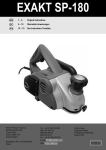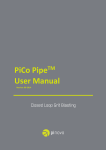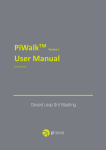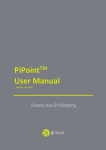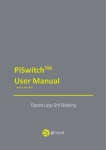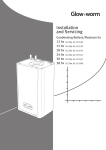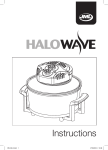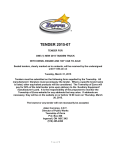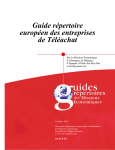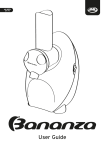Download Exakt EC-310-N Operating instructions
Transcript
EC310-AS EC310-AS JML America LLC, 7850 Ruffner Avenue, Van Nuys CA 91406 www.JMLAmerica.com, Made in PR China ©JohnMillsLtd/PS/10.08/EX/A Instructions JML America LLC, 7850 Ruffner Avenue, Van Nuys CA 91406 www.JMLAmerica.com, Made in PR China English GENERAL POWER TOOL SAFETY WARNINGS WARNING! Read all instructions. Failure to follow all instructions listed below may result in electric shock, fire and/or serious injury. The term “power tool” in all of the warnings listed below refers to your mains operated (corded) power tool or battery operated (cordless) power tool. SAVE THESE INSTRUCTIONS 1. Work area a) Keep work area clean and well lit. Cluttered and dark areas invite accidents. b) Do not operate power tools in explosive atmospheres, such as in the presence of flammable liquids, gasses or dust. Power tools create sparks, which may ignite the dust of fumes. c) Keep children and bystanders away while operating a power tool. Distractions can cause you to lose control. 2. Electrical safety a) Power tool plugs must match the outlet. Never modify the plug in any way. Do not use any adapter plugs with earthed (grounded) power tools. Unmodified plugs and matching outlets will reduce risk of electric shock. b) Avoid body contact with earthed or grounded surfaces such as pipes, radiators, ranges and refrigerators. There is an increased risk of electric shock if your body is earthed or grounded. c) Do not expose power tools to rain or wet conditions. Water entering a power tool will increase the risk of electric shock. d) Do not abuse the cord. Never use the cord for carrying, pulling or unplugging the power tool. Keep cord away from heat, oil, sharp edges or moving parts. Damaged or entangled cords increase the risk of electric shock. e) When operating a power tool outdoors, use an extension cord suitable for outdoor use. Use of a cord suitable for outdoor use reduces the risk of electric shock. 3. Personal safety a)Stay alert, watch what you are doing and use common sense when operating a power tool. Do not use a power tool while you are tired or under the influence of drugs, alcohol or medication. A moment of inattention while operating power tools may result in serious personal injury. b) Use safety equipment. Always wear eye protection. Safety equipment such as dust mask, non-skid safety shoes, hard hat, or hearing protection used for appropriate conditions will reduce personal injuries. c) Avoid accidental starting. Ensure the switch is in the off position before plugging in. Carrying power tools with your finger on the switch or plugging in power tools that have the switch on invites accidents. d) Remove any adjusting key or wrench before turning the power tool on. A wrench or a key left attached to a rotating part of the power tool may result in personal injury. e) Do not overreach. Keep proper footing and balance at all times. This enables better control of the power tool in unexpected situations. f) Dress properly. Do not wear loose clothing or jewellery. Keep your hair, clothing and gloves away from moving parts. Loose clothes, jewellery or long hair can be caught in moving parts. Rubber gloves and non-skid footwear are recommended when working outdoors. g)If devices are provided for the connection of dust extraction and collection facilities, ensure these are connected and properly used. Use of these devices can reduce dust related hazards. 4. Power tool use and care a) Do not force the power tool. Use the correct power tool for your application. The correct power tool will do the job better and safer at the rate for which it was designed. b) Do not use the power tool if the switch does not turn it on and off. Any power tool that cannot be controlled with the switch is dangerous and must be repaired. c) Disconnect the plug from the power source before making any adjustments, changing accessories, or storing power tools. Such preventive safety measures reduce the risk of starting the power tool accidentally. d)Store idle power tools out of the reach of children and do not allow persons unfamiliar with the power tool or these instructions to operate the power tool. Power tools are dangerous in the hands of untrained users. e) Maintain power tools. Check for misalignment or binding of moving parts, breakage of parts and any other condition that may affect the power tools operation. If damaged, have the power tool repaired before use. Many accidents are caused by poorly maintained power tools. f) Keep cutting tools sharp and clean. Properly maintained cutting tools with sharp cutting edges are less likely to bind and are easier to control. g) Use the power tool, accessories and tool bits etc., in accordance with these instructions and in the manner intended for the particular type of power tool, taking into account the working conditions and the work to be performed. Use of the power tool for operations different from intended could result in hazardous situation. 5. Service a) Have your power tool serviced by a qualified repair person using only identical replacement parts. This will ensure that the safety of the power tool is maintained. General Power Saw Safety Warnings 1. DANGER: a) Keep hands away from cutting area and the blade. b) Do not reach underneath the workpiece. The guard cannot protect you from the blade below the workpiece. c) Adjust the cutting depth to the thickness of the workpiece. Less than a full tooth of the blade teeth should be visible below the workpiece. d)Never hold piece being cut in your hands or across your leg. Secure the workpiece to a stable platform. It is important to support the work properly to minimise body exposure, blade binding, or loss of control. e)Hold power tool by insulated gripping surfaces when performing an operation where the cutting tool may contact hidden wiring or its own cord. Contact with a “live” wire will also make exposed metal parts of the power tool “live” and shock the operator. f) When ripping always use a rip fence or straight edge guide. This improves the accuracy of cut and reduces the chance of blade binding. g) Always use blades with correct size and shape (diamond versus round) of arbour holes. Blades that do not match the mounting hardware of the saw will run eccentrically, causing loss of control. h)Never use damaged or incorrect blade washers or bolt. The blade washers and bolt were specially designed for your saw, for optimum performance and safety of operation. INSTRUCTIONS • ENGLISH 4 2. Causes and prevention of kickback: • Kickback is a sudden reaction to a pinched, bound or misaligned saw blade, causing an uncontrolled saw to lift up and out of the workpiece toward the operator; • when the blade is pinched or bound tightly by the kerf closing down, the blade stalls and the motor reaction drives the unit rapidly back toward the operator; • if the blade becomes twisted or misaligned in the cut, the teeth at the back edge of the blade can dig into the top surface of the wood causing the blade to climb out of the kerf and jump back toward the operator. Kickback is the result of saw misuse and/or incorrect operating procedures or conditions and can be avoided by taking proper precautions as given below. a) Maintain a firm grip on the saw and position your arm to resist kickback forces. Position your body to either side of the blade, but not in line with the blade. Kickback could cause the saw to jump backwards, but kickback forces can be controlled by the operator, if proper precautions are taken. b) When blade is binding, or when interrupting a cut for any reason, release the trigger and hold the saw motionless in the material until the blade comes to a complete stop. Never attempt to remove the saw from the work or pull the saw backward while the blade is in motion or kickback may occur. Investigate and take corrective actions to eliminate the cause of blade binding. c) When restarting a saw in the workpiece, centre the saw blade in the kerf and check that saw teeth are not engaged into the material. If saw blade is binding, it may walk up or kickback from the workpiece as the saw is restarted. d)Support large panels to minimise the risk of blade pinching and kickback. Large panels tend to sag under their own weight. Supports must be placed under the panel on both sides, near the line of cut and near the edge of the panel. e) Do not use dull or damaged blades. Unsharpened or improperly set blades produce narrow kerf causing excessive friction, blade binding and kickback. f) Use extra caution when making a “plunge cut” into existing walls or other blind areas. The protruding blade may cut objects that can cause kickback. d) Have defective switches, guards and components replaced by an authorised service facility. Inspect extension cords periodically. If the supply cord becomes damaged it should only be replaced by the manufacturer or its service agents. e) When using outdoors, a residual current circuit breaker should always be used in conjunction with the tool. f) Do not use any other accessory or attachment other than those recommended by EXAKT Precision Tools. 4. Additional safety instructions a) Keep handles dry, clean and free from oil and grease. b) Do not stop the blade by applying lateral force to it. c) When not in use, tools should be stored in a dry, high or locked up place. 5 Operating Instructions This tool should always be used with the dust hose connected and attached to a suitable vacuum cleaner/dust extractor. Setting the Cutting Depth WARNING! Never use the power tool for any purpose other than that shown in the instruction manual. EC-310-AS Safety Warnings – f) Replace the safety retaining washer and tighten the screw. (Diagram D) g) Remove both hex keys before plugging in. Instructions for Putting Into Use Setting up the Saw for Use After unpacking check that there are no parts missing or damaged. If there are contact supplier and do not operate. Before using a blade needs to be fitted as described in the operating instructions. (See Blade Changing Section) A cardboard packing disk may be fitted in place of the blade, which will need to be removed. Information on Power Supply This equipment should be connected to a normal domestic socket outlet with a voltage rating between 210 and 250 V and a current rating of between 13 and 16A. Illustrated Description of Functions a) The depth of cut can be set in millimetres by turning the depth control knob. (Diagram A) b) The depth scale has long lines representing whole millimetres and short lines for half millimetres. To set for whole millimetres align the bottom edge of the depth control knob on a long line and read off the number that is just completely exposed. c) When cutting wood the depth of cut should be set to slightly greater than the thickness of the material for best results. d) When cutting plastics the depth of cut should be set to slightly greater than the thickness of the material. If melting occurs a greater depth setting will improve results. e) When cutting metals the depth of cut should be set to approximately 1.0 mm greater than the material thickness for best results. If it is desirable not to mark the surface beneath the workpiece, the depth can be set to the same as the material thickness, when cutting wood or plastics, but this may result in a rough edge. NB. If the depth control knob becomes difficult to turn, unscrew it until the rubber seal can be seen. Clean the surrounding area with a soft brush and then apply a very small quantity of synthetic grease to the seal. 3 a) Check guard for proper closing before each use. Do not operate the saw if guard does not move freely and enclose the blade instantly. Never clamp or tie the guard with the blade exposed. If saw is accidentally dropped, guard may be bent. Check to make sure that the guard moves freely and does not touch the blade or any other part, in all angles and depths of cut. b) Check the operation and condition of the guard return spring. If the guard and the spring are not operating properly, they must be serviced before use. Guard may operate sluggishly due to damaged parts, gummy deposits, or a build-up of debris. c) Assure that the guide plate of the saw will not shift while performing the “plunge cut.” d) Always observe that the guard is covering the blade before placing the saw down on bench or floor. An unprotected, coasting blade will cause the saw to walk backwards, cutting whatever is in its path. Be aware of the time it takes for the blade to stop after switch is released. EC-310-AS Safety Warnings Guard Removal NB. Do not use without the Guard. a) Ensure the tool is unplugged from the mains supply. b) Unscrew the guard release screw. Slide off the guard. (Diagram E) NB. When replacing the guard the blade can protrude through the slot in the base plate. To avoid injury ensure that the hand is kept well clear. Ensure the guard is replaced the correct way round. Blade Changing 1.Baseplate 2.Guard lock (not shown) 3.Depth adjuster knob 4.Switch 5.Handle 6. and 7. Air vents 8. Dust extract nozzle 9. Cutting width marks 10. Guard removal screw 11. Saw blade List of contents 1x EXAKT Precision Saw Blades (dependant on kit) 1x 60 tooth HSS blade 1x 18 TCT blade 1x G50 blade 1x Torx key & 1x U key 1x Spare safety washer 1x Dust extraction hose 1x Storage case 1x Instruction manual NB. Incorrect positioning of the blade can permanently damage the tool. a) Ensure the tool is unplugged from the mains supply. b) Unscrew the depth adjuster until the number 12 is visible. c) Without removing the guard insert the U key into the blade shaft to lock it. (Diagram B ) Slide off the removeable cover and insert the torx key into the blade retaining screw and unscrew clockwise. (Diagram C) d) Depress the guard to remove the blade. e) Place the new blade onto the blade shaft ensuring the hole locates correctly and the teeth point forwards in the direction of the curved arrow. (Diagram C) Clamping It is not normally necessary to clamp the material being cut as long as it is fully supported on a work surface and held with one hand. Clamping should be used where; • The operator is inexperienced in the use of power saws or weak handed • Small parts or tough material is to be cut. Cutting Limitations There is no limitation on the size of material that can be cut as long as it is fully supported. INSTRUCTIONS • ENGLISH 6 The saw will cut up to 12 mm deep. Material up to twice as thick can be cut if cutting is performed on both sides. Holding and Switching On Holding the tool correctly will result in easier and safer operation, with less fatigue. Right handed operator: (Diagram F) Cutting The EXAKT Precision Saw is unique because it clamps the material to be cut between its base plate and the work surface using a plunge action to ease the blade into the cut. This results in a faster, easier and cleaner cut. c) Grasp the handle firmly with the right hand so that it feels comfortable. The thumb should be towards the rear of the power switch. d) Do not cover any of the front vents and no more than one rear vent. e) To operate, ensure that any part of the thumb between the tip and middle joint is over the serrated area of the switch. (Whichever part is most comfortable). Squeeze the switch in towards the handle and then pull backwards. Left handed operator: (Diagram G) a) Grasp the handle firmly with the left hand so that it feels comfortable. The forefinger should be towards the rear of the power switch. b) Do not cover any of the front vents and no more than one rear vent. c) To operate, ensure that any part of the forefinger between the tip and middle joint is over the serrated area of the switch. (Whichever part is most comfortable) Squeeze the switch in towards the handle and then pull backwards. Guard Lock a) Place the tool at the start of the cut. b) Switch on the tool in accordance with the instruction manual. Next release the guard lock. (Diagram H). Then plunge the saw blade to start the cut. The guard lock is released by pushing in the direction of the arrow in the diagram. Either the hand holding the tool or work piece can be used, whichever is easier. c) After the cut has been finished and the tool switched off, ensure the guard lock has fully returned to its resting position. If not clean thoroughly with a soft brush. 7 NB. Always cut in a forward direction. Never draw the tool backwards. If you are a novice user, practice by cutting thin wood until proficient. a) Check the specifications to ensure the suitability of the material to be cut. b) Fit the correct blade ensuring it is sharp and not damaged. c) Set the depth of cut. (See Setting the Cutting Depth Section) d) Place the material to be cut onto a flat surface such as a workbench, table or floor. Use a piece of scrap material underneath if: • You do not wish to mark the work surface. • The work surface is likely to damage the blade. E.g. a concrete floor. e) Plug into mains supply. f) Grasp the tool firmly (See Holding & Switching on Section) and rest its metal base plate onto the surface to be cut. Ensure that the rear half of the base plate overhangs the work surface. Do not plunge the blade into the material. g) Switch on the tool and wait for one second for the blade to run up to speed. Next, depress the guard lock lever and plunge the blade into the material slowly and gently, but firmly. Then push the tool forwards along the line to be cut. (Never draw the tool backwards) h) Very little force should be used to feed the tool along the cut. Excess force will cause operator fatigue and excessive wear to the blade and tool. Excess force is also likely to cause the temperature cut-out to trip, resulting in delays. i) Ensure that the base plate is always held flat on the material being cut. This is particularly important at the start or finish of a cut or if thin strips are being cut where the base plate is not fully supported. j) Once the cut has been finished, lift the tool from the work surface before switching off. If a lot of dust has been created, keep switched on for a few seconds extra to allow the dust to clear from within the tool. Line Following a) Pointers at the front and rear of the guard allow a line to be followed, when cutting. (Diagram I) b) For more accurate and neater cutting a metal ruler, held with the free hand, can be followed. To position the ruler draw a second line 10 mm to the left of the cutting line. (Or 33 mm to the right of the cutting line for left handed operators.) (Diagram J) Measuring the Cutting Width When making cut outs it is desirable to know exactly where the cut will start and stop to prevent unsightly over cutting. Indication numbers, which correspond to the depth setting, are marked on both sides of the guard to show where the blade starts and stops. (Diagram K) a) Mark the area to be cut out on the material to be cut. If the area is not a square or rectangle, separate start and finish lines may have to be drawn. These are drawn from the start and finish point, at right angles to the line of cut. b) To use the width indication system first set the cutting depth, (See Setting the Cutting Depth Section) for example, to 9 mm. c) Identify this number (e.g. 9) both on the front and rear of the guard. d) Align the indication mark below the rearmost number on the guard with the start line on the material to be cut. e) Proceed with the cut until the indication mark below the forward number aligns with the finish line on the material being cut. Cut-outs NB. Plunge cutting may not be possible in some hard materials. a) Set the depth of cut, (See Setting the Cutting Depth Section) plug in the mains supply and then place the metal base plate onto the work surface. Ensure that the rear width indication mark on the guard aligns with the start line. (See Measuring the Cutting Width Section) To ensure accurate cut-outs the guard can be held with the free hand, but ensure it does not come into contact with the blade. b) Switch on the tool and wait for one second for the blade to run up to speed. Next, plunge the blade into the material slowly and gently, but firmly. Then push the tool forwards along the line to be cut. (Never draw the tool backwards) c) Once the finish line has been reached, lift the tool from the work surface before switching off. If a lot of dust has been created, keep switched on for a few seconds extra to allow the dust to clear from within the tool. d) Cutting out tips: • If the cut is to be covered, for example by a vent cover, the corners can be overlapped to ensure that the waste material is completely detached. • If the cut out is to be seen, do not overlap the corners. In this circumstance, as the cutting blade is circular, the waste material will not be fully detached. The corners will therefore, require finishing with a knife. If the material is thin and the back surface unimportant, the waste material can just be pushed out. • Where there is access to the back surface of the material to be cut, the cut out can be marked out with an over cutting allowance. The cut is then made from the back surface to ensure perfect corners on the front surface. A table of over cutting allowances is shown in the specifications section. Cutting particularly Tough or Abrasive Materials NB. Learn to use the tool by cutting wood before attempting to cut anything tougher. When cutting tougher material, such as metals and some plastics, more force is required to hold the work piece and clamping may be required. Never cut materials that produce toxic dust or fumes such as PTFE or asbestos. 1. Sheet metal: • Always set the depth adjustment to at least 1 mm greater than the material thickness to avoid the blade riding up over the surface. Scrap material is required underneath the work surface. • Remove burrs and rust as these impede the feed across the material. • Thick beeswax (furniture polish) applied to the base plate of the tool makes metal cutting easier. • Do not cut galvanised steel. • Every 2 minutes of metal cutting should be followed by a rest of at least 3 minutes. 2. Ceramic tiles, slates etc: • Only use a blade specifically designed for the purpose. • Always use with a suitable vacuum cleaner or dust extractor connected as the dust can be hazardous to the operator and prevent the guard operating correctly. • Applying masking or PVC tape to the base plate of the tool, or alternatively to the work piece can make cutting easier and avoid scratching the tile. 3. Plasterboard: • The EXAKT Precision Saw is only recommended for making occasional cut outs in plasterboard and always with a suitable vacuum cleaner or dust extractor connected. The dust can prevent the guard operating correctly. • Conventional tools such as keyhole saws or knives generally give excellent results, though the EXAKT Precision Saw can be used if a particularly neat, dust free cut is required or if there is a danger of cutting pipes or cables. Dust Extraction The EXAKT Precision saw is a powerful tool capable of producing a large amount of dust. As the tool has a fully enclosed blade, forced dust extraction is particularly efficient. Forced dust extraction should be used for all but small trimming jobs. a) An industrial vacuum dust extractor or domestic vacuum cleaner can be connected to the dust outlet nozzle of the tool, using the dust hose kit from EXAKT Precision Tools Ltd. b) Before using ensure that the metal retaining clip is flush with the end of the hose. INSTRUCTIONS • ENGLISH 8 c) To attach the hose disconnect the tool from the mains supply. Press the hose end with the metal clip onto the dust outlet nozzle only as far as the raised ridges on the tool body. Ensure the guard moves up and down freely. Press the stepped adaptor onto the vacuum hose. Tape can be used to assist, if required. d) Ensure that the vacuum cleaner to be used is recommended for use with a power tool. Generally most domestic wet and dry vacuum cleaners are suitable. e) Forced dust extraction is particularly recommended when a lot of cutting is being carried out as far fewer stoppages are required for cleaning the tool and surrounding area. f) Forced dust extraction should always be used when cutting hazardous materials such as hard woods, MDF or ceramics. g) Forced dust extraction is recommended when it is desirable to keep the working area clean. h) Forced dust extraction is essential if the material being cut is slightly damp. Temperature cut-out The EXAKT Precision Saw is fitted with a temperature cut-out to prevent the tool overheating. If the cut-out trips the tool will stop. It will not re-start until the tool has cooled down. This could take up to 15 minutes. The temperature cut-out will trip in the following circumstances: • Using blunt blades. • Excess force applied when cutting. • Continuous cutting of very hard or thick materials. Using a V Guard A V Guard can be purchased as an accessory or may be included in the kit from some suppliers. The V Guard is used to cut plastic, copper and aluminium pipes as well as wooden dowel. a) To fit the V Guard see Guard removal section. b) For cutting copper or aluminium pipes only use a 60 or 80 tooth blade. c) Place the pipe so that the area being cut is fully supported on the work surface. d) Place the saw on top of the pipe to be cut and use free hand to rotate the pipe as required. Ensure that the hand holding the pipe is kept at a safe distance from the cutting blade. EC-310-AS Safety Warnings – NB. Never replace this washer with anything other than an EXAKT replacement part. (See List of user-replacable parts) Blades NB. Always use a sharp blade. • If the tool does not cut as well as expected or if it overheats (temperature cut out may trip) the most common cause is a blunt blade. • It is difficult to see or feel if the blade is blunt. If in doubt use a new blade. • Blades are consumable items. • Always use EXAKT blades. • Beware when changing blades as they can become hot during use. Allow the blade time to cool before replacing. Servicing EXAKT Precision Tools Ltd.Tel: +44 (0)1467 633800 Midmill Business Park Fax: +44 (0)1467 633900 Tumulus Way e-mail: [email protected] Kintore Freephone numbers: Inverurie AB51 0TG D: 0800 180 7063 Scotland, UK F: 0800 916696 I: 800 930 019 List of user-replaceable parts: Blade Part No. Accessory Part No. 22 Teeth 30 Teeth 44 Teeth 60 Teeth 80 Teeth 100 Teeth 18 TCT G50 Diamond AS-24-01 AS-23-01 AS-25-01 AS-26-01 AS-27-01 AS-29-01 AS-31-01 AS-32-01 Dust hose Spare Guard Blade washer Blade Screw Guard Screw Torx Key U Hex Key Fence Guard AS-38-03 AS-43-01 AS-42-01 AS-129-01 AS-108-02 AS-128-01 AS-130-01 AS-40-01 V-Guard AS-39-01 2.65Ib (1.2kg) Maximum blade diameter 50.8 mm Maximum / Minimum blade width 2 mm / 0.75 mm Hand arm vibration value < 2.5 m / s2 Sound pressure level No load 83 dBA Sound power level Lwa No Load 94 dBA Cutting Specs. Wood Metals Composites Plastics Minerals All types up to 12 mm Up to 3 mm in Aluminium & lead MDF, ply & chipboard to 12 mm Tufnol, perspex, fibreglass etc. Wall & Floor tiles, slates etc. Where there is access to cut from the back surface of the material, over cutting by the allowance shown will ensure perfect corners on the front surface. Over cutting allowances in mm Depth setting 1 2 3 4 6 9 12 Overcut by 3 5.5 7.5 9 11.5 14.5 16.5 Assumes the depth has been set to 0.5 mm greater than the material to be cut. Explanation of Symbols This product is UL listed Wear suitable face mask Cleaning Double insulated appliance Wear suitable eye protection Read instructions before use Wear suitable ear protection Regular cleaning is required for the safe operation of the tool, as an excessive build up of dust will prevent the tool operating correctly. The dust extract nozzle may block and require cleaning occasionally, especially if damp wood is being cut. • Unplug from mains supply and remove guard. (See Guard Removal Section) • Clean thoroughly with a small soft brush, like a paint brush. Risk of electric shock Risk of injury when instructions are not followed Safety Blade Retaining Washer 9 8.8:1 Approximate weight If the replacement of the supply cord is necessary, this has to be done by the manufacturer or his service agent in order to avoid a safety hazard. Maintenance and Servicing The blade is clamped in place using a special safety washer that is designed to slip if the blade jams. The result is that the motor slows down, sounds like it is labouring and the tool will stop cutting. If this happens the operator should immediately reduce the feed pressure until the motor sounds healthy or remove the tool from the work piece to prevent permanent damage. The washer is a consumable item, which should be replaced if damaged or deformed. Gearbox reduction ratio Specifications EC-310-AS Usage DIY Motor power 350W Depth of cut 0.472” (12mm) Approx. no load blade speed 4000 rpm Maximum duty cycle 3 min / 5 min INSTRUCTIONS • ENGLISH 10 JML America LLC 7850 Ruffner Avenue, Van Nuys CA 91406 www.JMLAmerica.com Made in PR China Patents apply. Registered design. The EXAKT Logo is a registered trade markMade in PRC. 11 INSTRUCTIONS • ENGLISH 12






